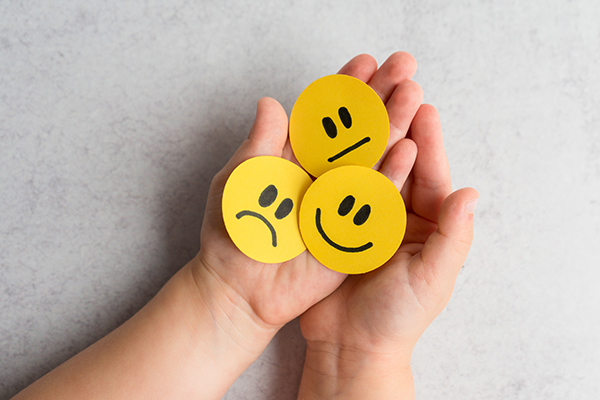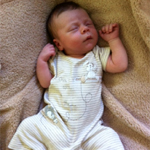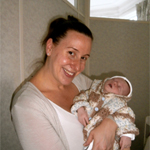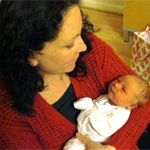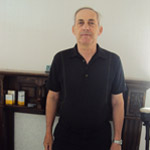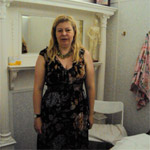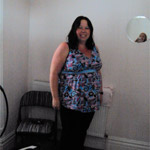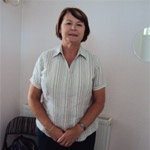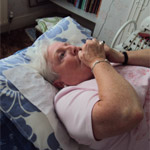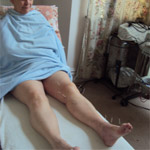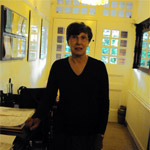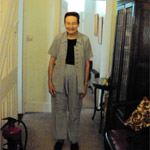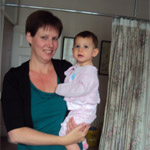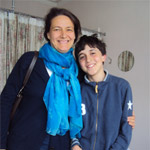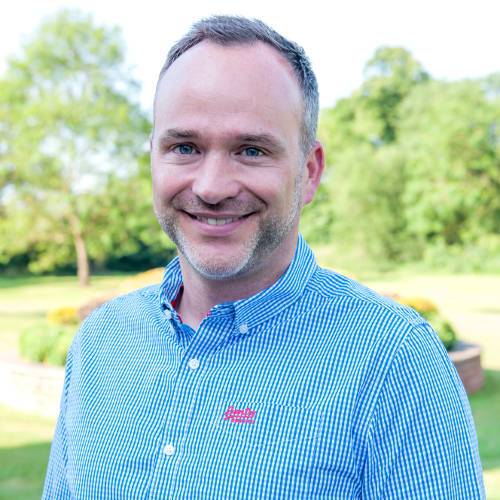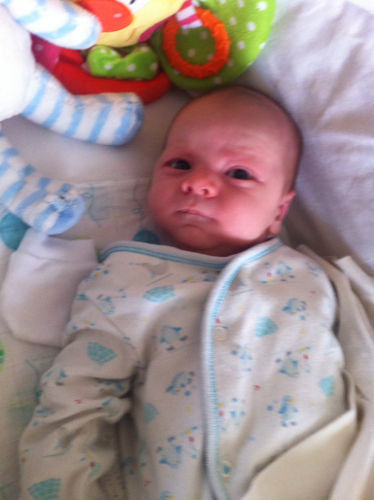Denise Callaghan has more than 35 years’ experience as a fully qualified Osteopathic practitioner and is registered with the General Osteopathic Council. But another area in which she specialises in is paediatrics — the branch of medicine that involves the medical care of babies and children.
To further complement her Cranial Osteopathy work and expertise in this area, Denise has a diploma in Paediatrics from The College of Integrated Chinese Medicine after undergoing an intensive one-year course that saw her master the art of Tui Na and Shonishin.
Both of these effective and non-invasive traditional techniques have been used for hundreds of years and there is evidence to suggest that they can help children and babies with a range of symptoms, from asthma and eczema to sleeplessness and social functioning.
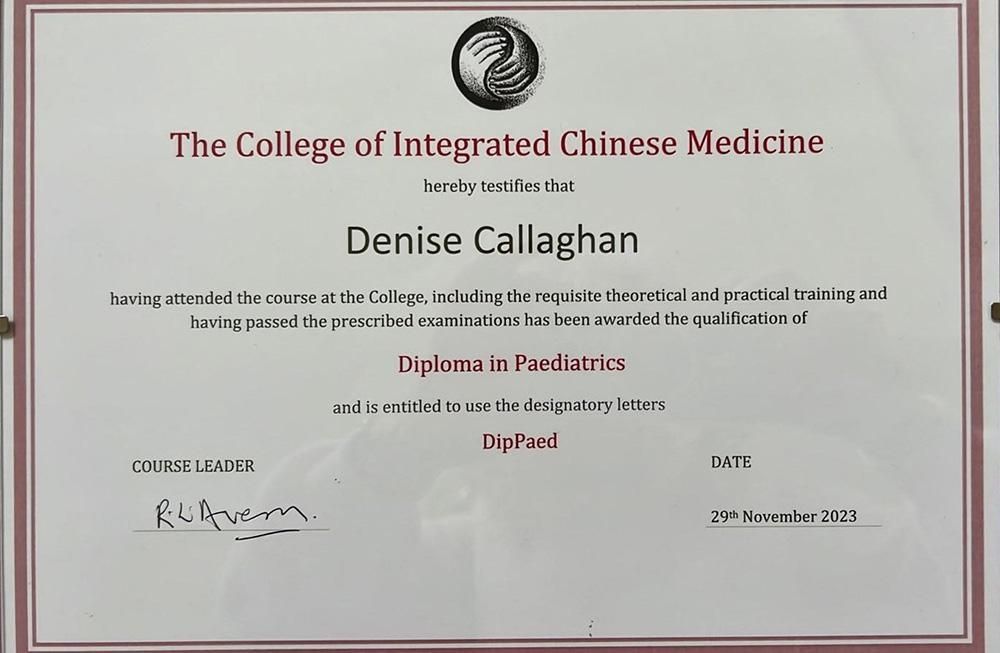
For advice on Traditional Chinese and Japanese Diagnosis and Treatment for babies and children
What is Tui Na?
Put simply, Tui Na is a Chinese massage practice that developed out of a mother’s innate instinct to stroke her baby to help get rid of any imbalances or blockages to help restore the body’s overall balance.
It’s based on the theory of qi — which, in traditional Chinese medicine, is a vital energy in the body that guides your physical and mental processes — and these imbalances of blockages of qi can lead to illness and pain.
Tui Na massage focuses on approximately 100 acupoints, lines and areas (most of which are particular to children) and uses a practitioner’s hands to stimulate these points to promote balance and harmony within the body.
Plus, it’s no secret that the power of touch has been proven to promote healthy brain development but it can be particularly beneficial to the parts of the brain which help a child to manage social interaction.
From a medical point of view, massage is believed to:
- Invigorate lymphatic flow
- Facilitate blood circulation
- Strengthen metabolism
- Sedate the nervous system
Massage can play a role in reducing both anxiety levels and pain and helping children to establish a boundary between themselves and the external world. It can also help children to inhabit their physical body and to feel comfortable within.
What is Shonishin?
Gentle, non-invasive and best-suited to babies, small infants and sensitive children, this Japanese technique dates back to the 17th century. It uses a number of tools specifically developed to tap, stroke and target the acupoints on the surface of a child’s skin. It’s often  referred to as acupuncture for kids, however it does not use needles and is pain-free.
referred to as acupuncture for kids, however it does not use needles and is pain-free.
Shonishin helps to regulate the movement of qi and works to balance the autonomic nervous system (the network of nerves throughout your body that control unconscious processes like breathing or your heart beating) to help release oxytocin (a natural hormone that promotes positive feelings).
The ‘tapping’ technique brings heat to the surface, while the ‘stroking’ process clears the heat and helps to restore calm. Essentially, it works to disperse ‘yang’ and nourish ‘yin’.
What can Tui Na and Shonishin help with?
Both of these techniques can help with a range of ailments and problems. This includes:
Sleep issues
Attachment issues can prove to be a problem for many parents and because of this, some may find it difficult to help get their baby to sleep — and ensure they stay asleep.
Digestion and food allergies
Allergies and digestion problems aren’t uncommon in babies and children. From colic and reflux, to allergies to peanuts, milk and eggs. If your baby or child is suffering with these types of problems, and you are struggling to find a solution, Traditional Chinese and Japanese Diagnosis and Treatment could be the answer.
Coughs, asthma and eczema
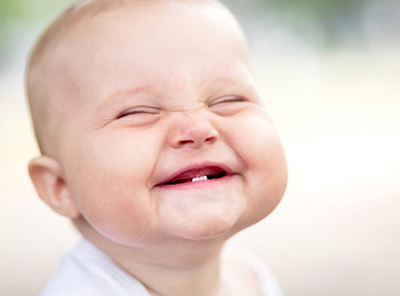
Did you know, according to the NHS around 1 in 11 young people have asthma? And, according to research, there is increasing scientific evidence demonstrating that Traditional Chinese Medicine, like Tui Na, has potential for treating asthma and associated conditions. While another paper, published in the peer-reviewed Mount Sinai Journal of Medicine found it may ‘reduce the duration and recurrent rate of coughs in children’.
Ear problems
Unfortunately, thanks to the hundreds of different colds viruses and a lack of built-up immunity, young children can have eight or more colds a year. And with colds, can come ear infections. Meaning they can also be common in babies and small children.
Bedwetting and UTIs
Nocturnal enuresis (NE), or ‘bedwetting’, is a form of night-time urinary incontinence occurring in younger children. But UTIs also can cause kids to wet their pants or the bed, even if they haven’t had these problems before.
Autistic spectrum disorder
Autism is a condition which means a person’s brain works differently to other people’s. Limited eye contact, lack of gesturing, and not responding to their name are some early signs of autism and it’s something most parents will spot in their child by the age of two, but some can appear as early as two months. While Autistic Spectrum Disorder (ASD) development is irreversible, Tui Na has been used to treat children with ASD.
Childhood and adolescent mental health
Childhood and adolescence is a time when rapid growth and development take place in the brain. But according to the NHS, this is also a time when a large number of children and young people will experience behavioural or emotional problems at some stage.
Signs that your child might be struggling includes:
- significant changes in behaviour
- difficulty sleeping
- withdrawing from social situations
- not wanting to do things they usually like
As we’ve heard, Shonishin helps to release oxytocin (a natural hormone that promotes positive feelings) and balance the autonomic nervous system. Both of which can help to restore a person’s overall wellbeing.
Get in touch
Denise brings with her more than 35 years’ of experience in working with patients and their babies and children and will always ensure to provide the most appropriate medical advice and treatment. She will also refer patients back to their GP if a problem is not suitable for these traditional Chinese and Japanese treatments.
If you would like to find out more on how Denise can help your young infant or baby, please do get in touch. Denise will answer any questions and queries you might have and, if suitable, invite you for a consultation.

